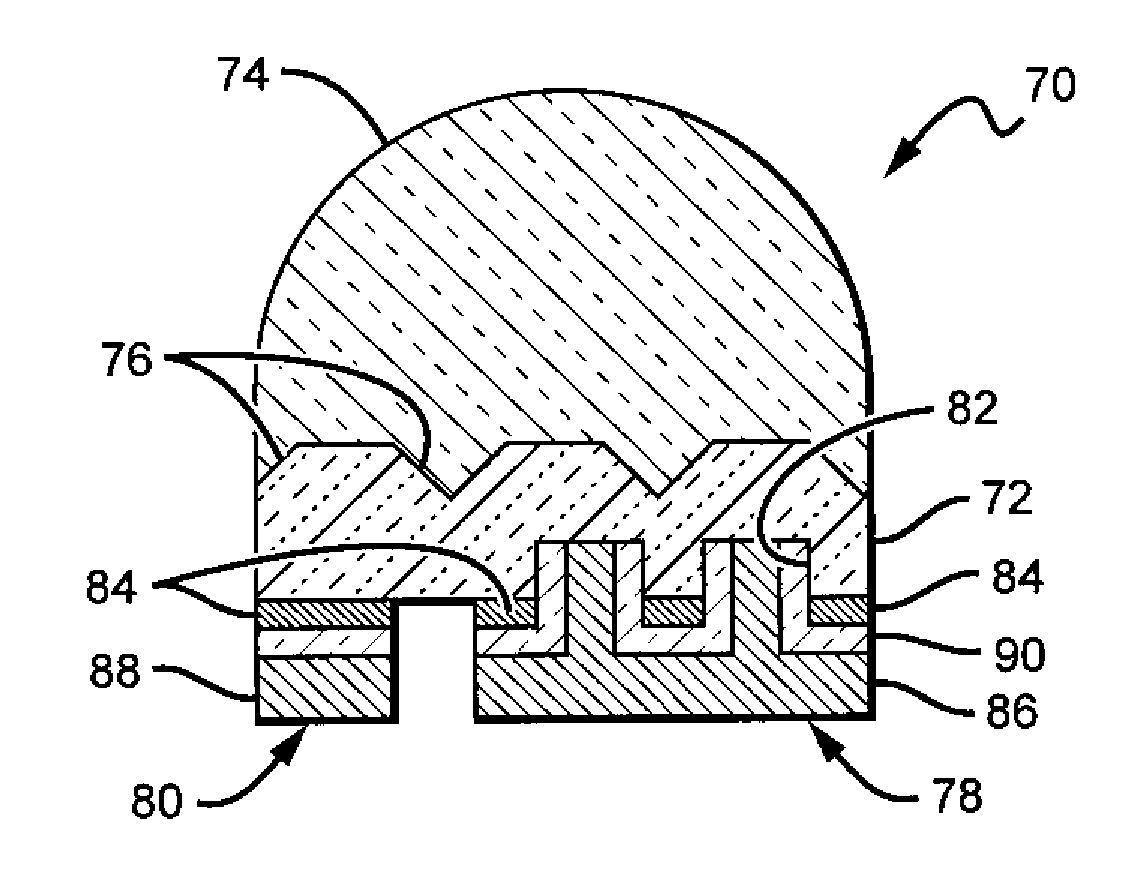High power leds with non-polymer material lenses and methods of making the same
a technology of non-polymer material and leds, which is applied in the manufacture of semiconductor/solid-state devices, semiconductor devices, electrical apparatus, etc., can solve the problems of lens heat-up, certain undesirable effects, and the polymer material of the lens to degrade more quickly, so as to avoid damage to the metalized part and high bonding or mounting temperature
- Summary
- Abstract
- Description
- Claims
- Application Information
AI Technical Summary
Benefits of technology
Problems solved by technology
Method used
Image
Examples
Embodiment Construction
[0030]The present invention is directed to LED chips and LED packages, and methods for fabrication of the same. In particular, the present invention is directed to LED chips and LED packages (“LED chip” or “LED chips”) fabricated having lenses (or encapsulants) that withstand degradation from environmental conditions such as elevated temperatures. The lenses can be made of many different materials that can have some or all of the following characteristics. The material should be substantially transparent to the light emitted by the LED chip and the light converted by wavelength converters, and it should maintain its transparency over time, even when exposed to elevated temperatures and / or high humidity. The material should also have a coefficient of thermal expansion (CTE) that is similar to that of the LED semiconductor material. This allows for reliable operation through different temperature cycles.
[0031]The lens material should also have an index of refraction (IR) that allows f...
PUM
 Login to View More
Login to View More Abstract
Description
Claims
Application Information
 Login to View More
Login to View More - R&D
- Intellectual Property
- Life Sciences
- Materials
- Tech Scout
- Unparalleled Data Quality
- Higher Quality Content
- 60% Fewer Hallucinations
Browse by: Latest US Patents, China's latest patents, Technical Efficacy Thesaurus, Application Domain, Technology Topic, Popular Technical Reports.
© 2025 PatSnap. All rights reserved.Legal|Privacy policy|Modern Slavery Act Transparency Statement|Sitemap|About US| Contact US: help@patsnap.com



